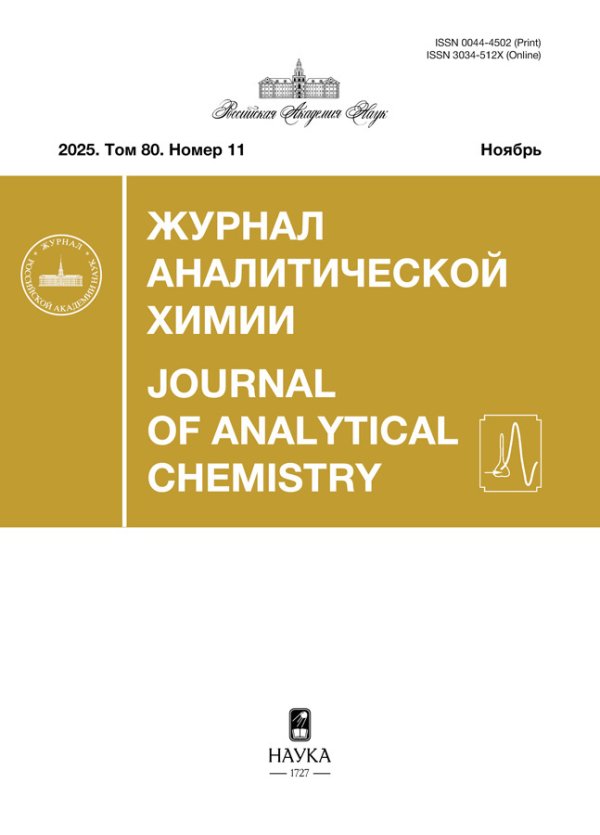Neuro-fuzzy method of processing hydrochemical data for river flow
- Authors: Rosenthal O.M.1, Fedotov V.K.2
-
Affiliations:
- Institute of Water Problems of the Russian Academy of Sciences
- Ulyanov Chuvash State University
- Issue: Vol 79, No 11 (2024)
- Pages: 1256-1265
- Section: ДИСКУССИИ
- Submitted: 16.06.2025
- URL: https://rjsvd.com/0044-4502/article/view/684635
- DOI: https://doi.org/10.31857/S0044450224110126
- EDN: https://elibrary.ru/swiwfu
- ID: 684635
Cite item
Abstract
Production and socio-environmental requirements for the quality of land waters have determined the need to create a network of hydrochemical observation posts, and the variability of controlled indicators – the need to perform routine chemical analytical studies. The standard (rigid) statistical methods of processing measurement results common in analytical chemistry, as a rule, underestimate the specifics of studying noisy (fuzzy) experimental data, which are the series of values of the impurity concentration of a river stream in space and time. It is shown that in this case, alternative soft computing tools designed to process exactly such data based on neuro-fuzzy hybrid algorithmic structures related to the ANFIS architecture are appropriate. The arrays of chemical analytical data on copper and zinc analyzed in this way on the Volga River, depending on water flow at different distances from the shore and depths, made it possible to identify the complex oscillatory behavior of concentrations of both substances in the water stream. It is concluded that the neuro-fuzzy scheme for processing monitoring results provides an opportunity for in-depth study of poorly understood processes of hydrochemical dynamics in systems far from thermodynamic equilibrium, which include natural watercourses.
Full Text
About the authors
O. M. Rosenthal
Institute of Water Problems of the Russian Academy of Sciences
Author for correspondence.
Email: omro3@yandex.ru
Russian Federation, 3b, Gubkin St., Moscow, 119333
V. Kh. Fedotov
Ulyanov Chuvash State University
Email: omro3@yandex.ru
Russian Federation, 15, Moskovsky Ave., Cheboksary, Chuvash Republic, 428015
References
- Золотов Ю.А. Основы аналитической химии. Кн. 1. Общие вопросы. М.: Высшая школа, 2002. 351 с.
- Tsakovski S.L., Venelinov T. Environmental analytical chemistry // Molecules. 2024. V. 29. № 2. P. 450. https://doi.org/10.3390/molecules29020450.
- Конференции “Эконалалитика” // Журн. аналит. химии. 2020. Т. 75. № 9. С. 855. https://doi.org/10.31857/S0044450220090200.
- Wilkinson K.J., Lead J.R. Environmental Colloids and Particles: Behaviour, Separation and Characterisation. San Francisco: John Wiley & Sons, 2007. 702 p.
- Шевцов М.Н. Водно-экологические проблемы и использование водных ресурсов. Хабаровск: Изд-во Тихоокеан. гос. ун-та, 2015. 197 с.
- Kailash B.G., Bisht P.S. The role of water resources in socio-economic development // Int. J. Res. Appl. Sci. Eng. Technol. 2017. V. 5. № 12. P. 1669.
- Malov A.I., Sidkina E.S., Ershova D.D., Cherkasova E.V., Druzhinin S.V. Time regularities of strontium concentration in drinking groundwater distant from the sea coast // Environ. Geochem. Health. 2023. V. 45. № 11. P. 8097. https://doi.org/10.1007/s10653-023-01710-9
- Wilcox В.Р., Seyfried M.S., Matison Т.Н. Searching for chaotic dynamics in Snowmelt runoff // Water Resour. 1991. V. 27. № 6. P. 1005. https://doi.org/10.1029/91WR00225.
- Швейкина В.И., Кожевникова И.А. Нелинейная модель колебаний речного стока с хаотическими режимами // Водное хозяйство России: проблемы, технологии, управление. 2012. № 6. С. 4.
- РД 52.24.634-2002. Руководящий документ. Методические указания. Уточнение местоположения створов (пунктов) наблюдений и режимов отбора проб на основе использования трассерных методов изучения гидродинамических характеристик водных объектов (утв. и введен в действие Росгидрометом 16.05.2002). 20 с.
- Розенталь О.М., Александровская Л.Н. Оценка степени соответствия воды нормативным требованиям // Водные ресурсы. 2018. Т. 45. № 3. С. 289. https://doi.org/10.7868/S0321059618030070 (Rosental O.M., Aleksandrovskaya L.N. Assessment of the degree of compliance of water to regulatory requirements // Water Resour. 2018. V. 45. № 3. P. 379. https://doi.org/10.1134/S0097807818030132).
- Thomas L., Ferrari R. Friction, frontogenesis, and the stratification of the surface mixed layer // J. Phys. Oceanogr. 2008. V. 38. № 38. P. 2501.
- Чашечкин Ю.Д., Розенталь О.М. Структура речного потока и ее влияние на распределение загрязняющего воду вещества // Водные ресурсы. 2019. Т. 46. № 6. С. 582. https://doi.org/10.31857/S0321-0596466582-591 (Chashechkin Yu.D., Rozental O.M. River flow structure and its effect on pollutant distribution // Water Resour. 2019. V. 46. № 6. P. 910. https://doi.org/10.1134/S0097807819060022).
- РД 52.24.309-2011. Организация и проведение режимных наблюдений за состоянием и загрязнением поверхностных вод суши. Ростов-на-Дону, 2011. 109 с.
- ГОСТ 27384-2002. Вода. Нормы погрешности измерений показателей состава и свойств. М.: Стандартинформ, 2010.
- Розенталь О.М., Авербух А.И. Введение в квалиметрию воды // Водные ресурсы. 2013. Т. 40. № 4. С. 418. https://doi.org/10.7868/S0321059613040111 (Rozental O.M., Averbukh A.I. Introduction to water qualimetry // Water Resour. 2013. V. 40. P. 447. https://doi.org/10.1134/S0097807813040118)
- Кудинов Ю.И., Келина А.Ю., Кудинов И.Ю., Пащенко А.Ф., Пащенко Ф.Ф. Нечеткие модели и системы управления. М.: ЛЕНАНД, 2017. 328 с.
- Федотов В.Х. Мягкое описание фундаментальных законов природы и общества для экспертных систем // European Researcher (Европейский исследователь). 2012. № 2 (17). С. 110. EDN: OUINYP.
- Терано Т., Асаи К., Сугэно М. Прикладные нечеткие системы. М.: Мир, 1993. 368 p.
- Штовба С.Д. Проектирование нечетких систем средствами MATLAB. М.: Горячая линия-Телеком, 2007. 288 с.
- Леонов А.С. Решение некорректно поставленных обратных задач: очерк теории, практические алгоритмы и демонстрации в МАТЛАБ. М.: Либроком, 2015. 336 с.
- Kuhn K.M., Neubauer E., Hofmann T., von der Kammer F., Aiken G.R., Maurice P.A. Concentrations and distributions of metals associated with dissolved organic matter from the Suwannee River // Environ. Eng. Sci. 2015. V. 32. № 1. P. 54. https://doi.org/10.1089/ees.2014.0298
- Danilov-Danilyan V.I., Rosenthal O.M. Dynamic model of water quality evolution // J. Water Chem. Technol. 2022. V. 44. № 2. P. 132. https://doi.org/10.3103/S1063455X22020035
Supplementary files





















